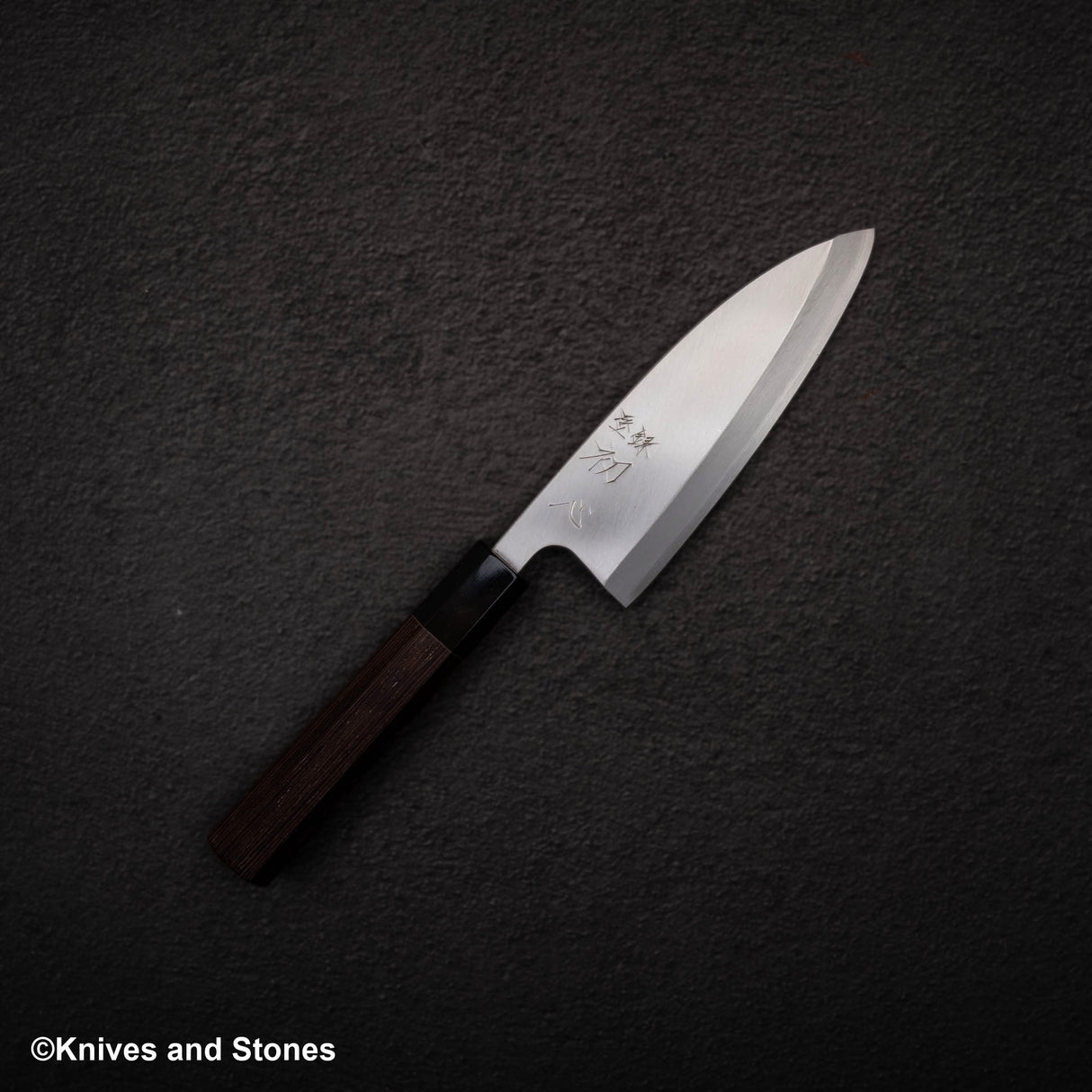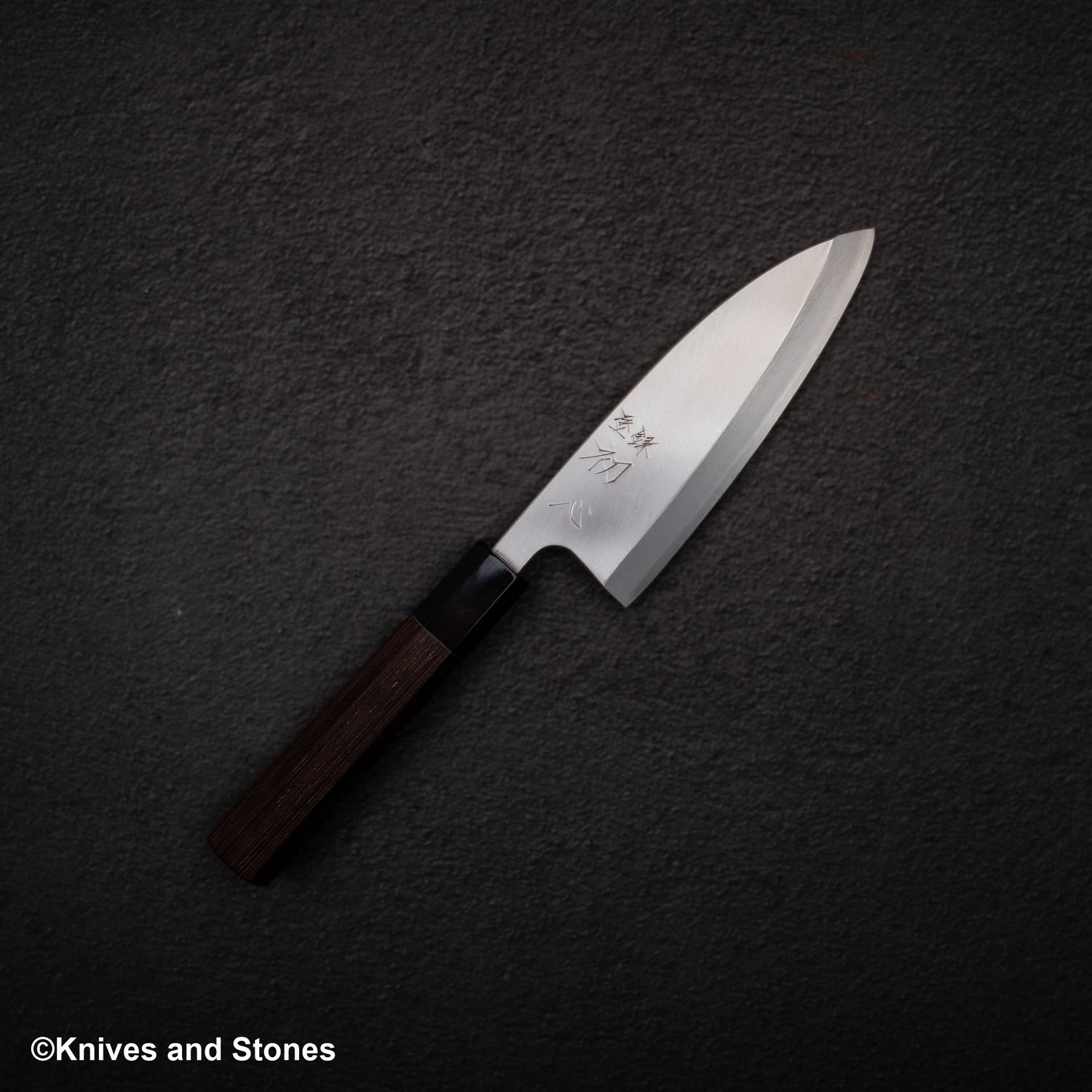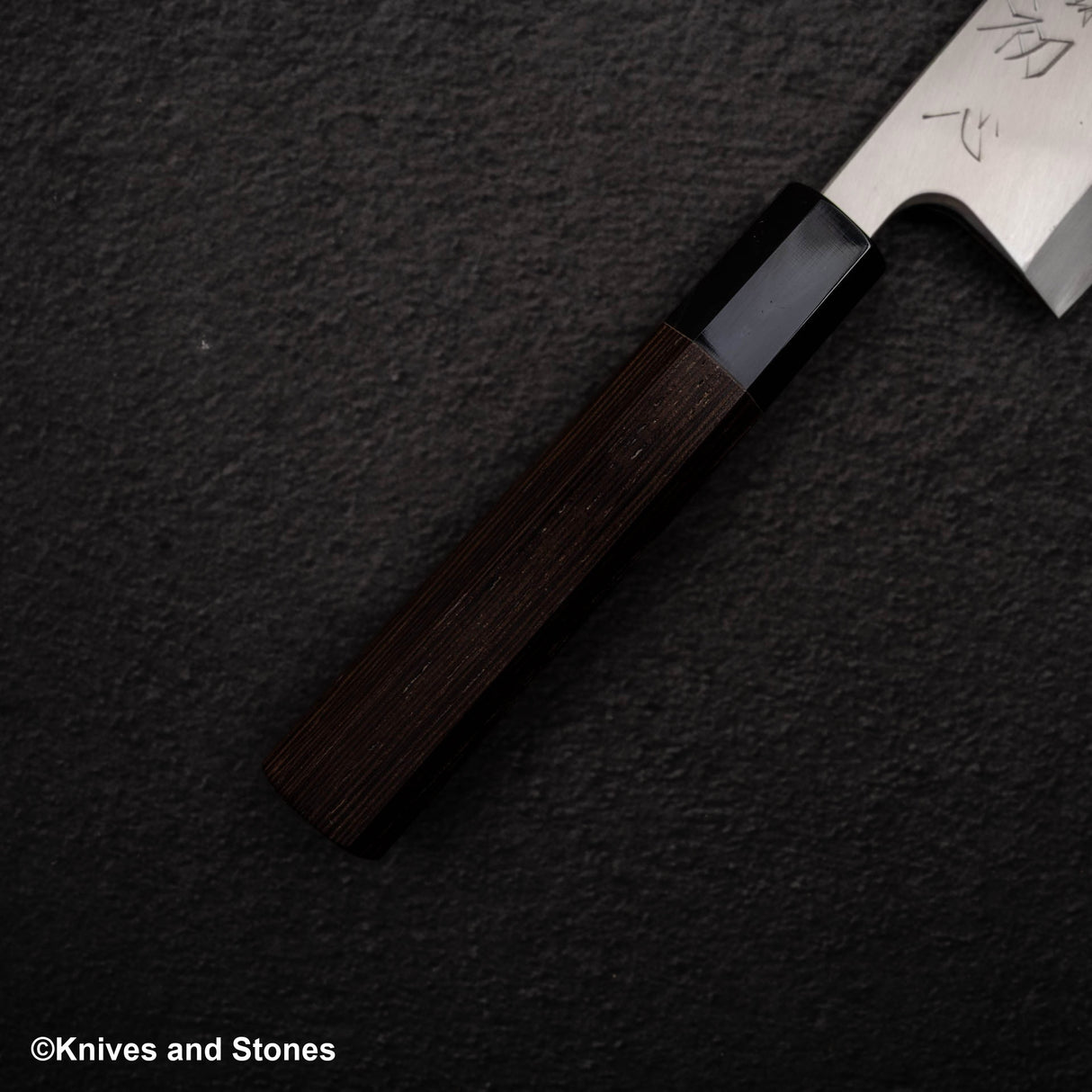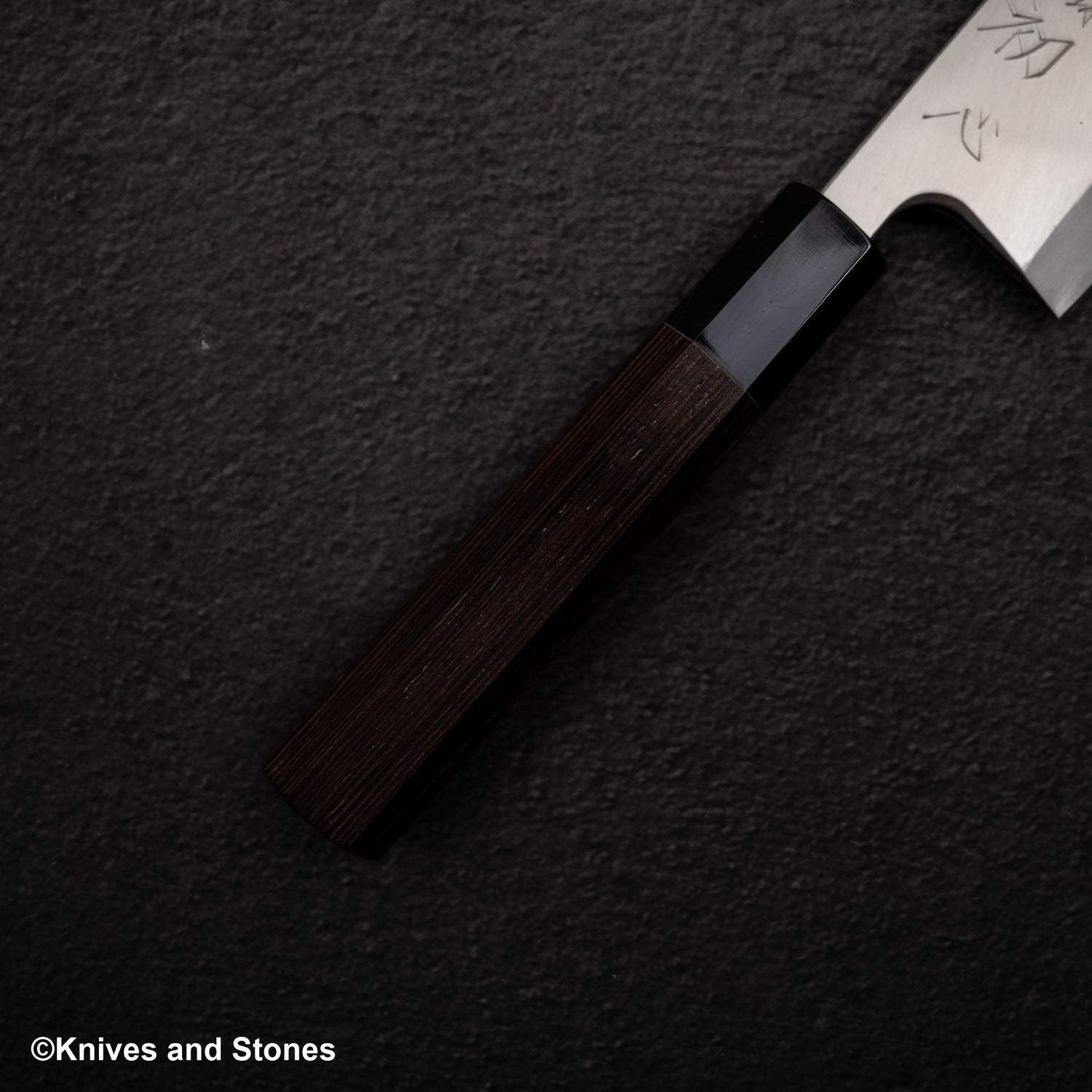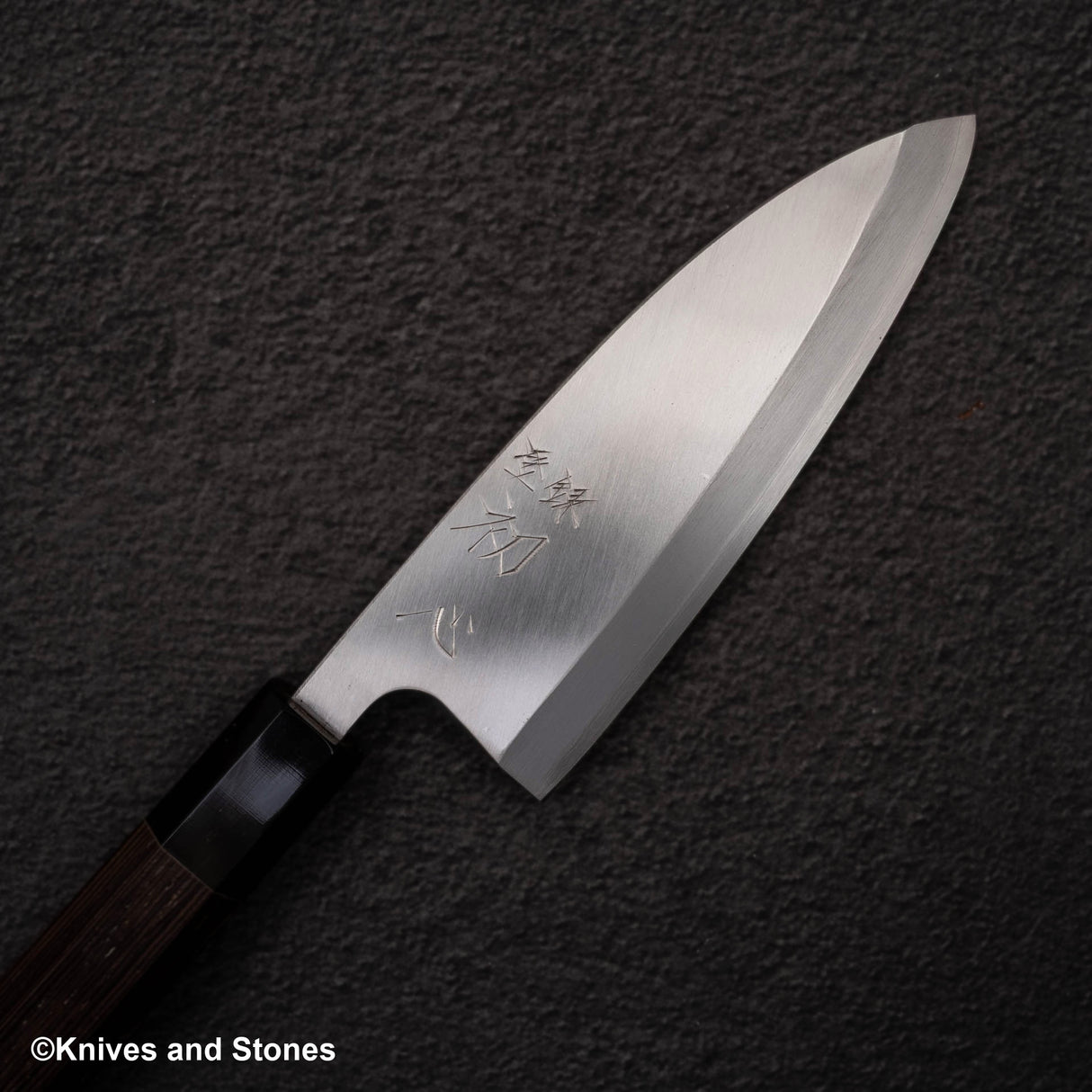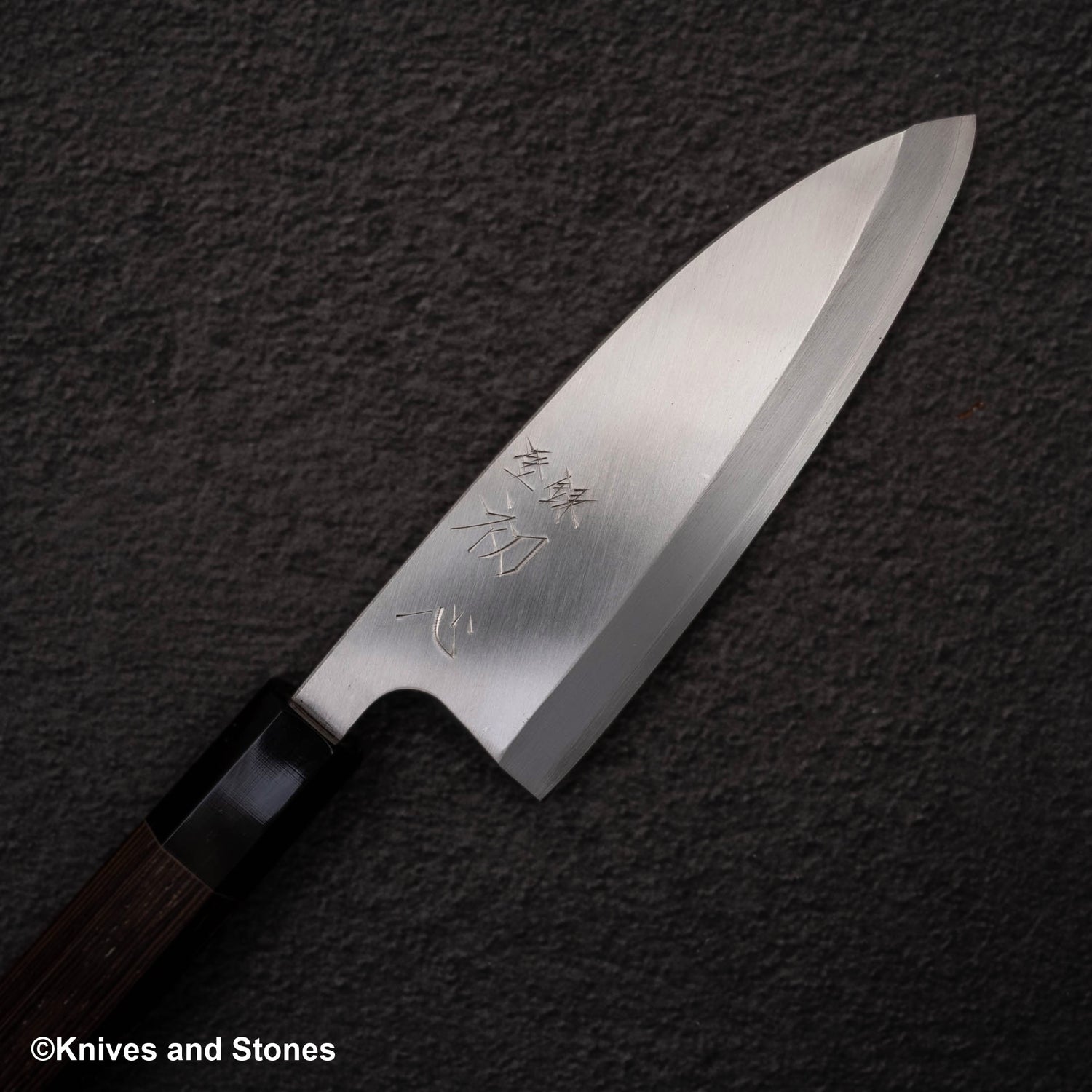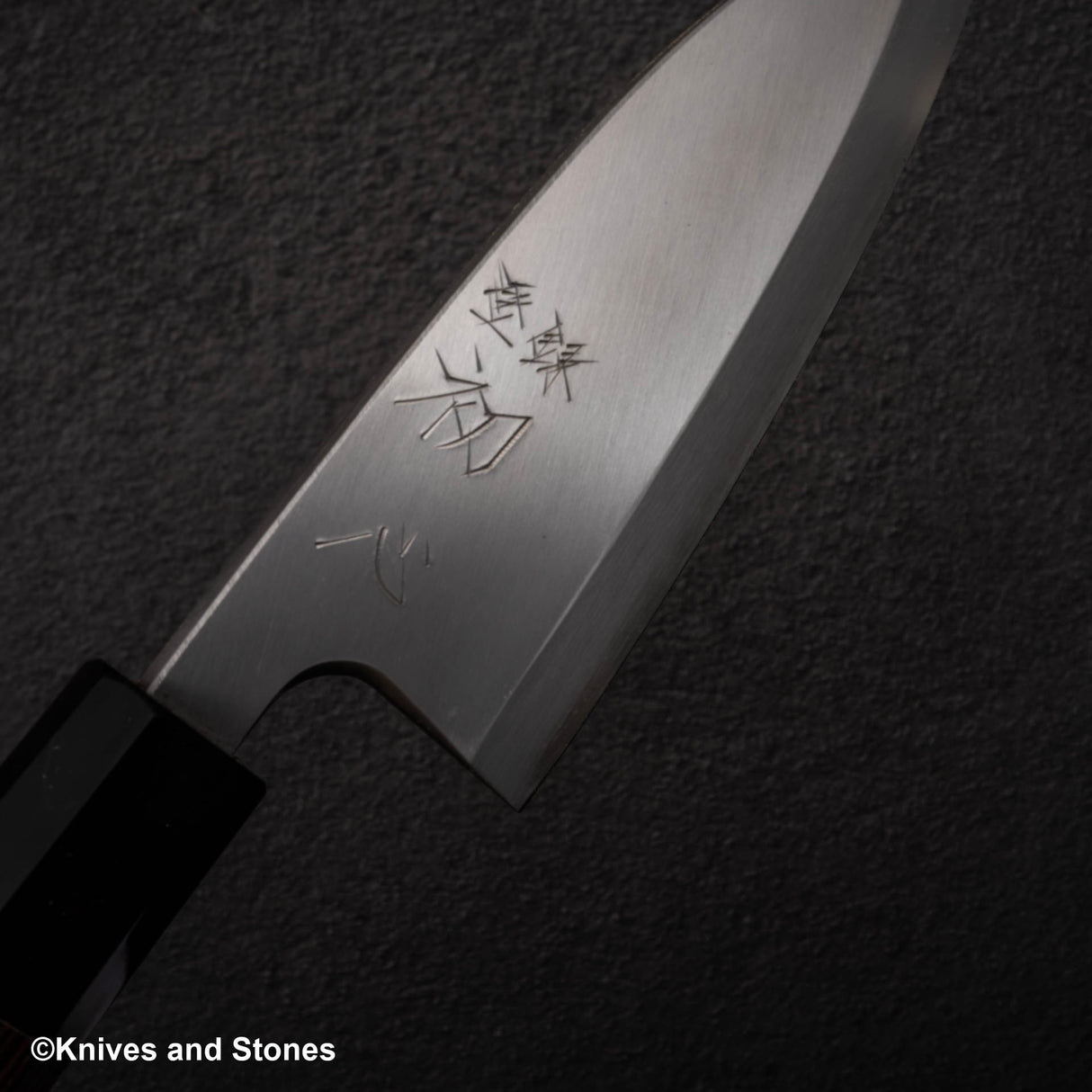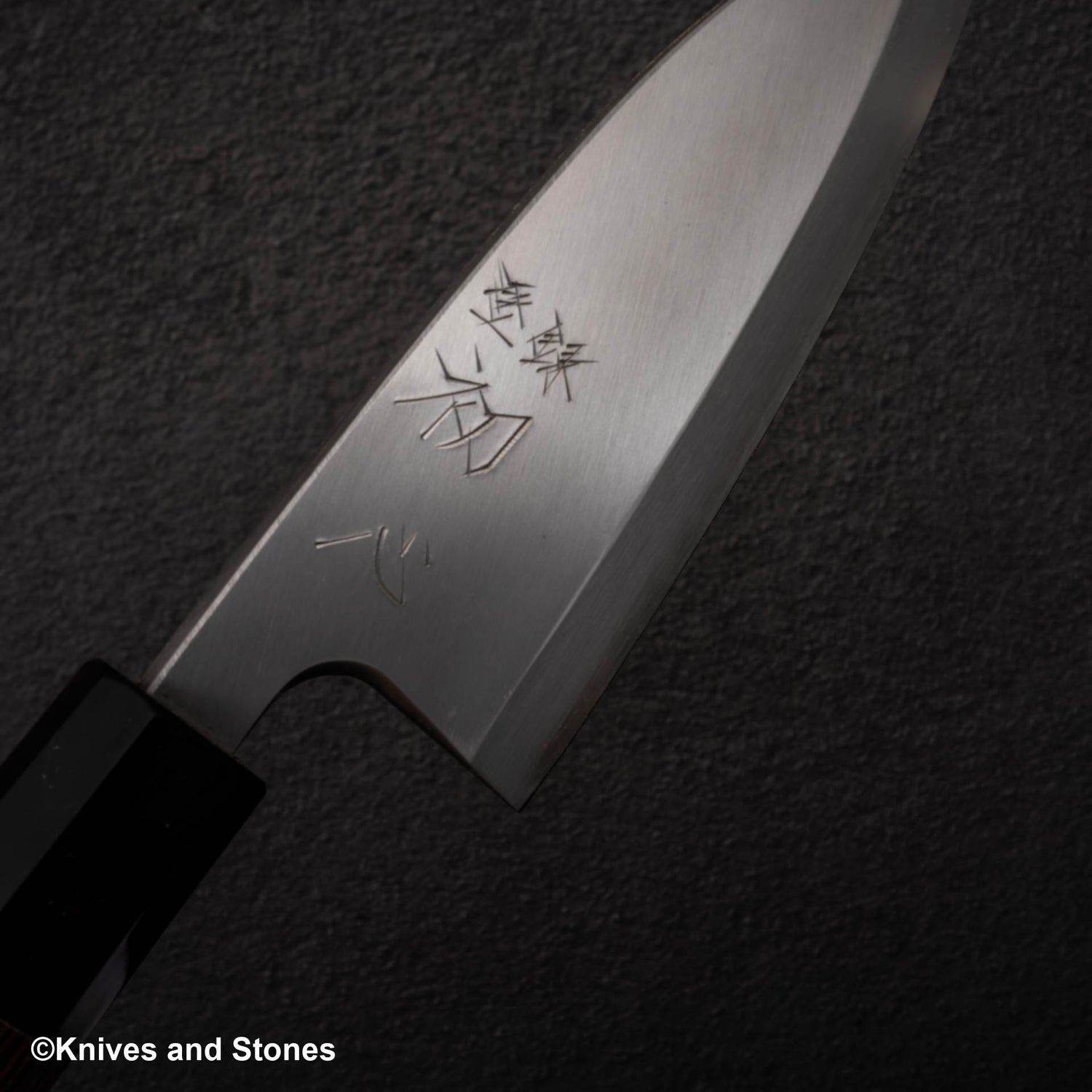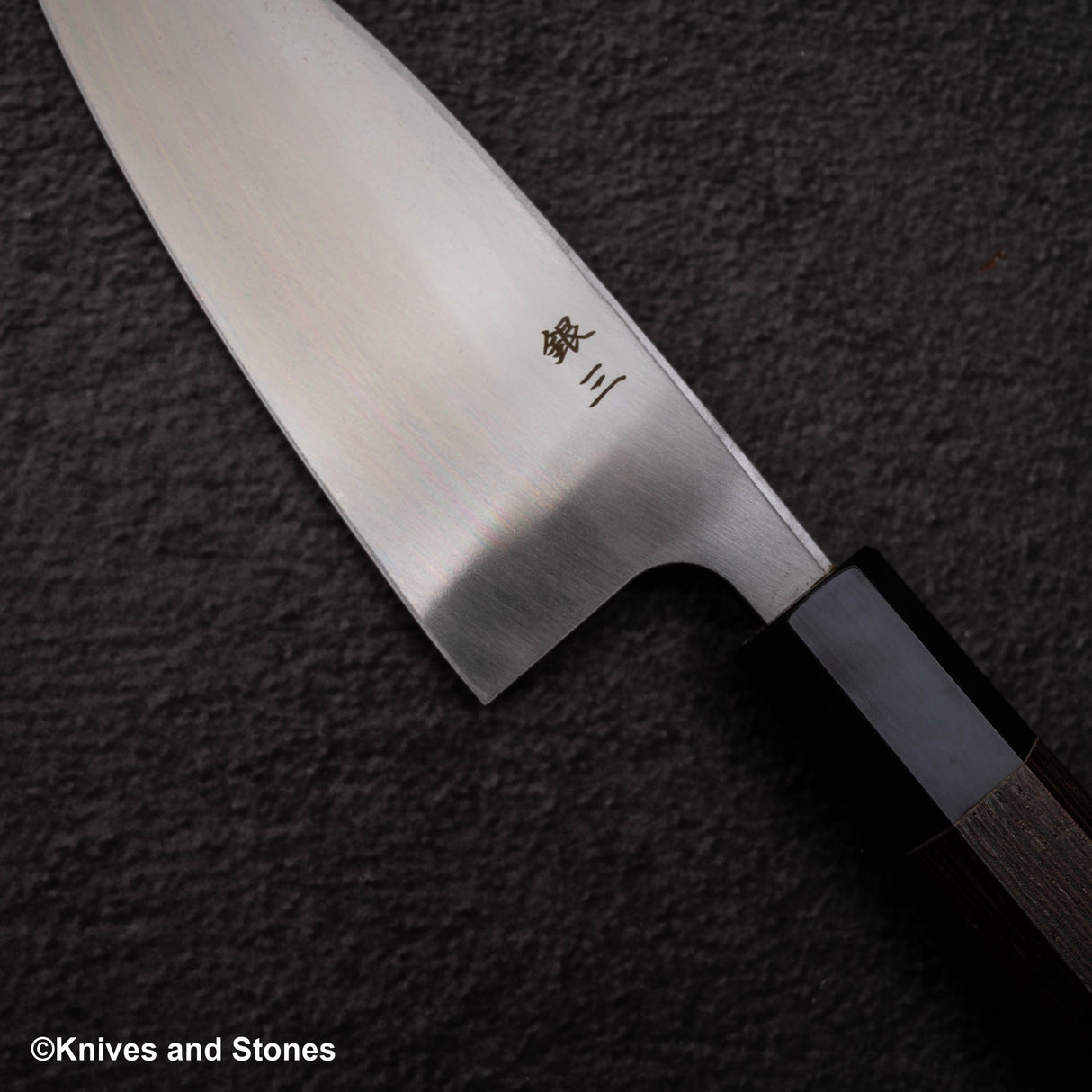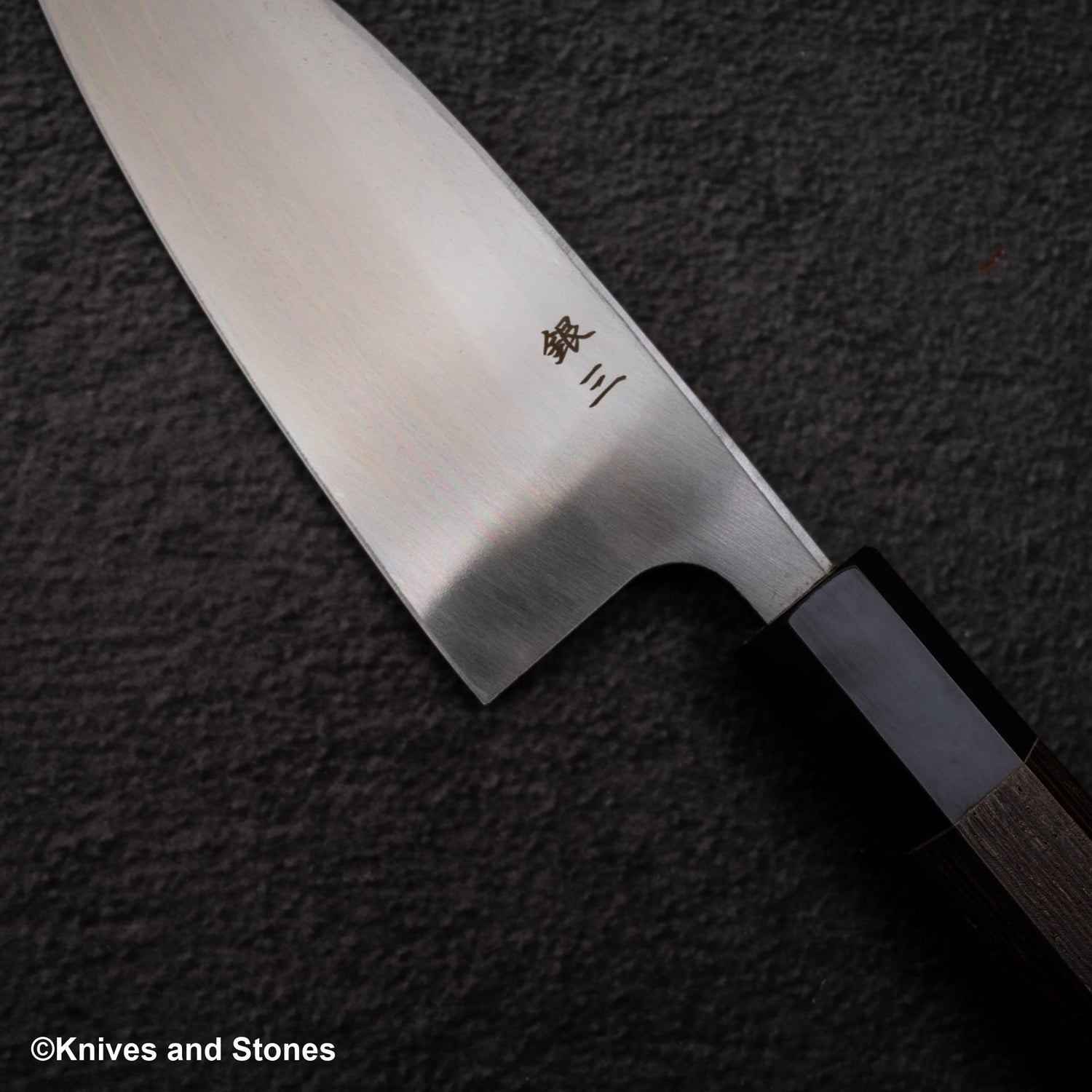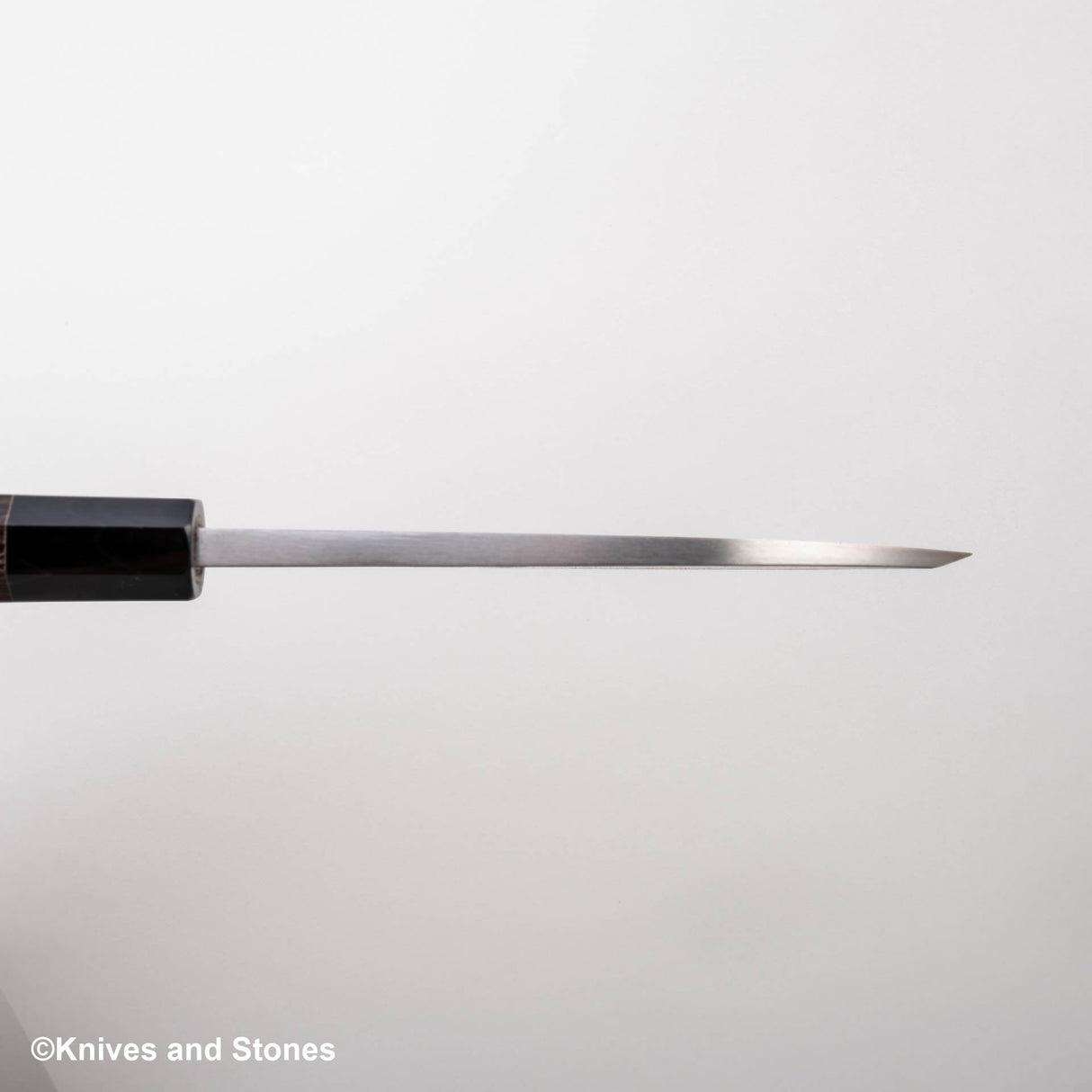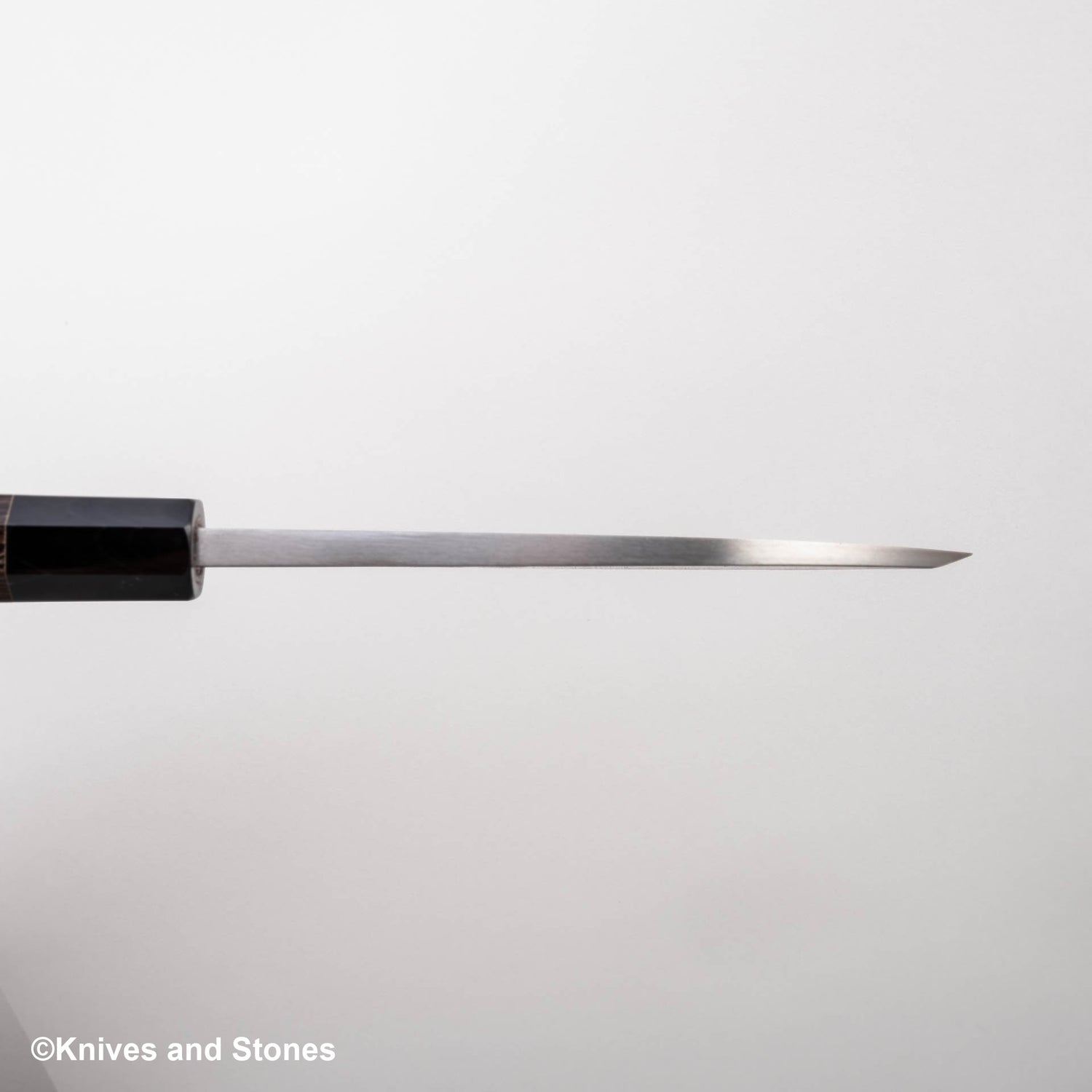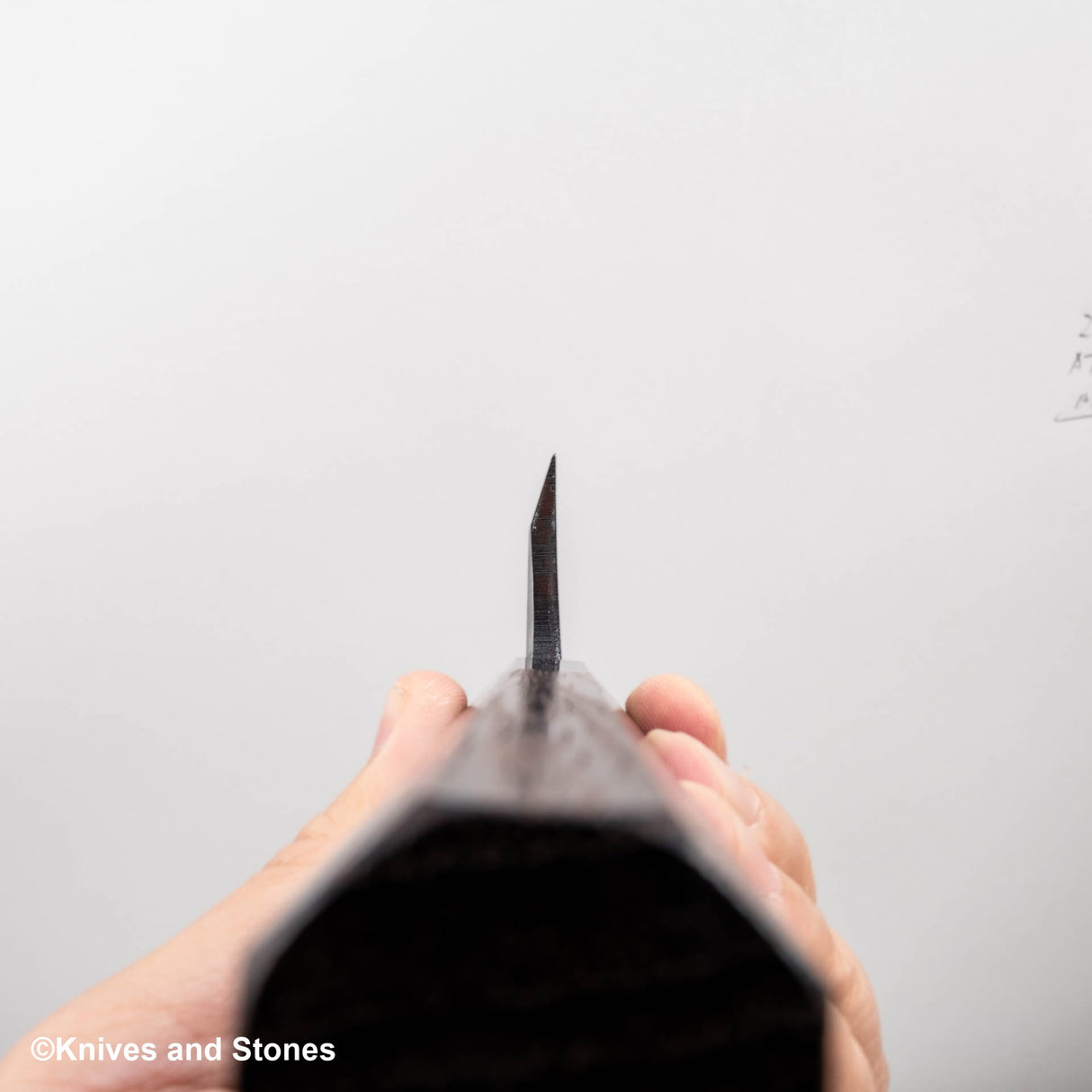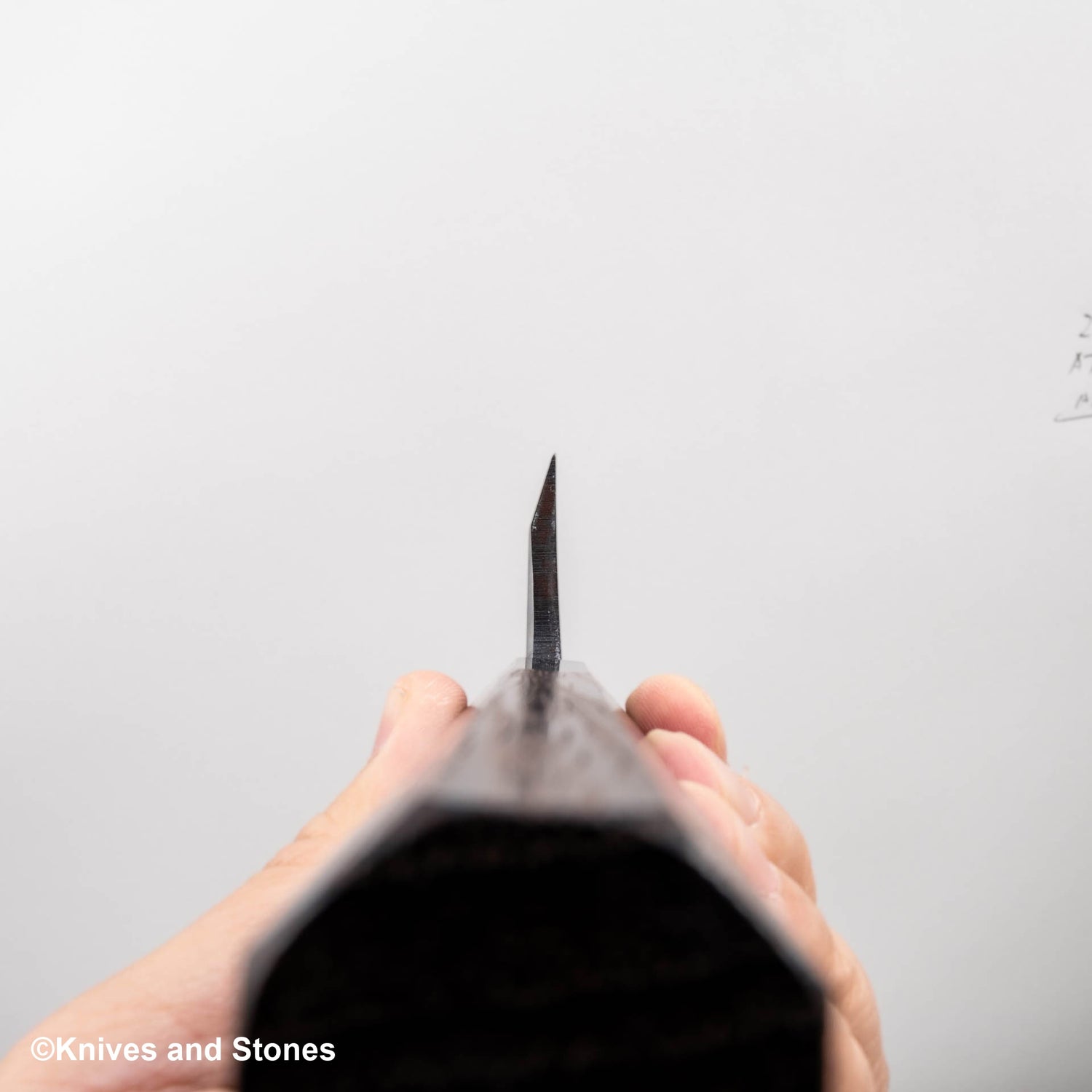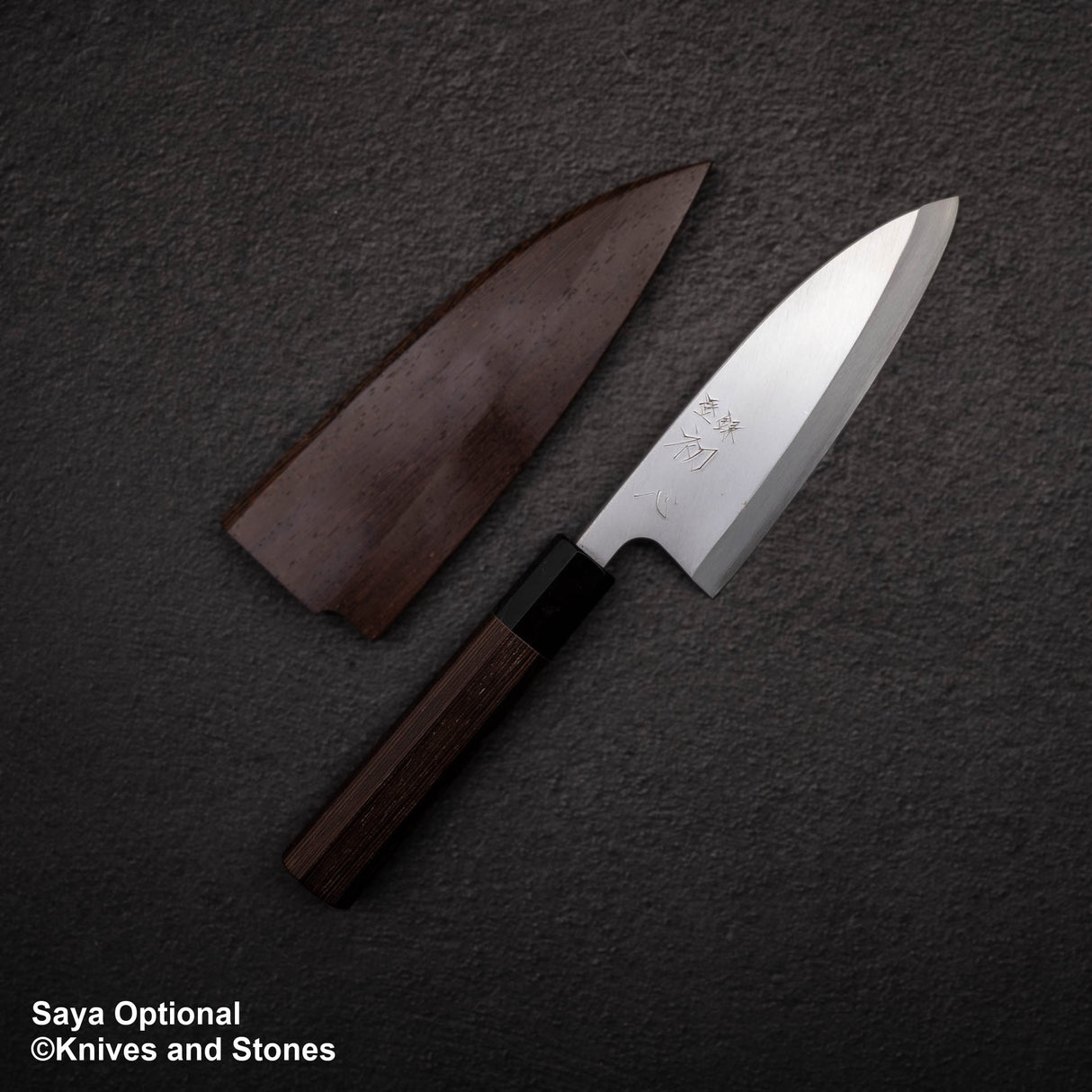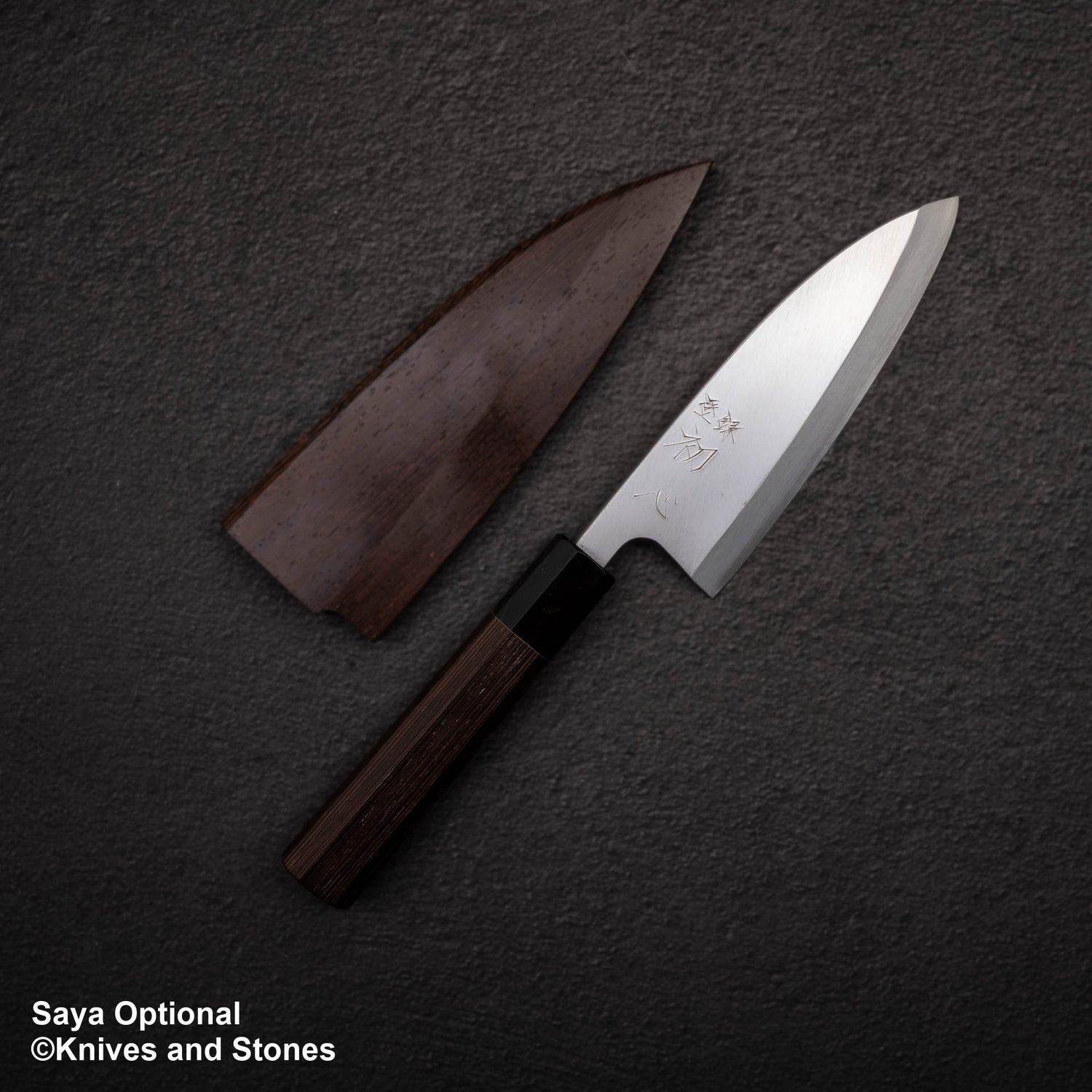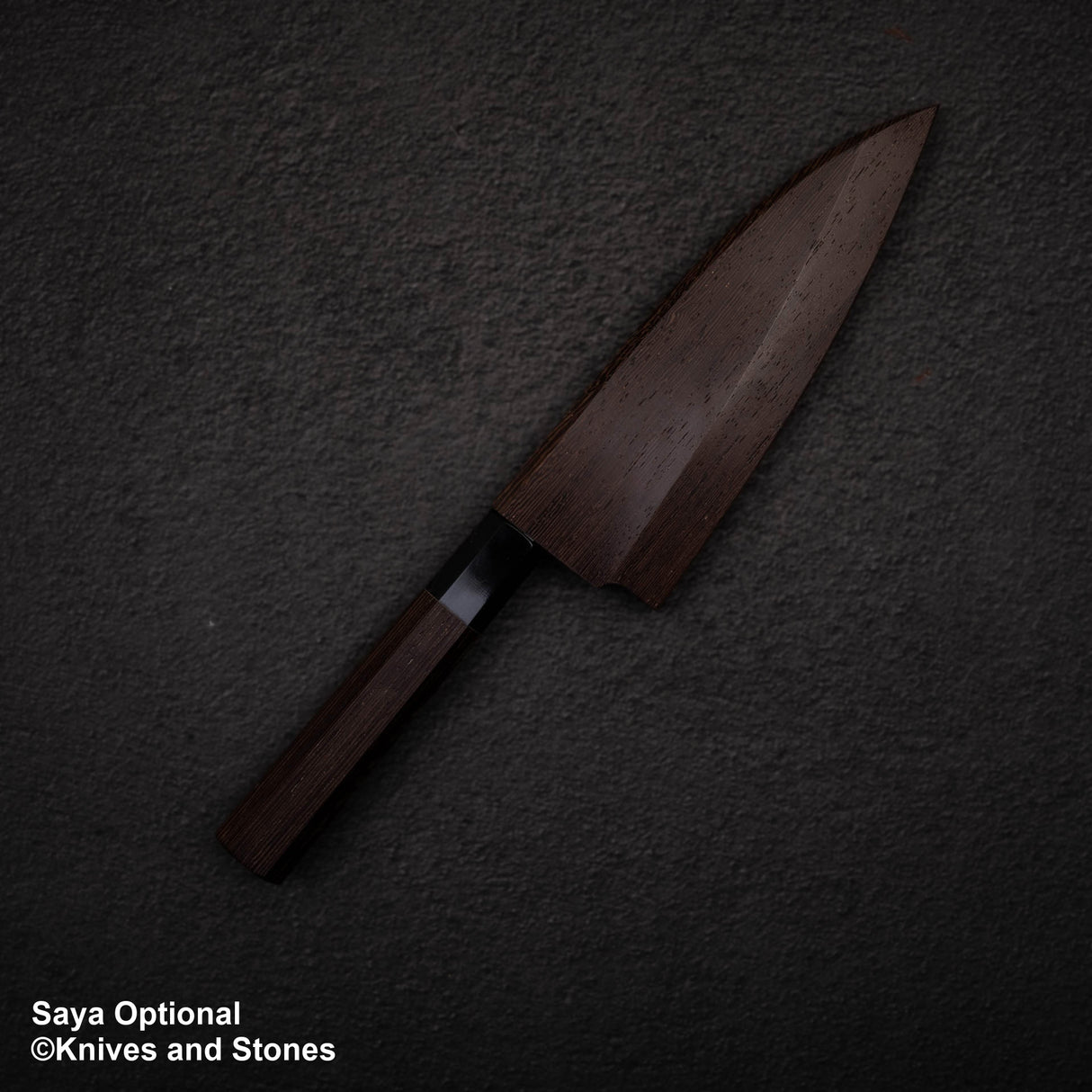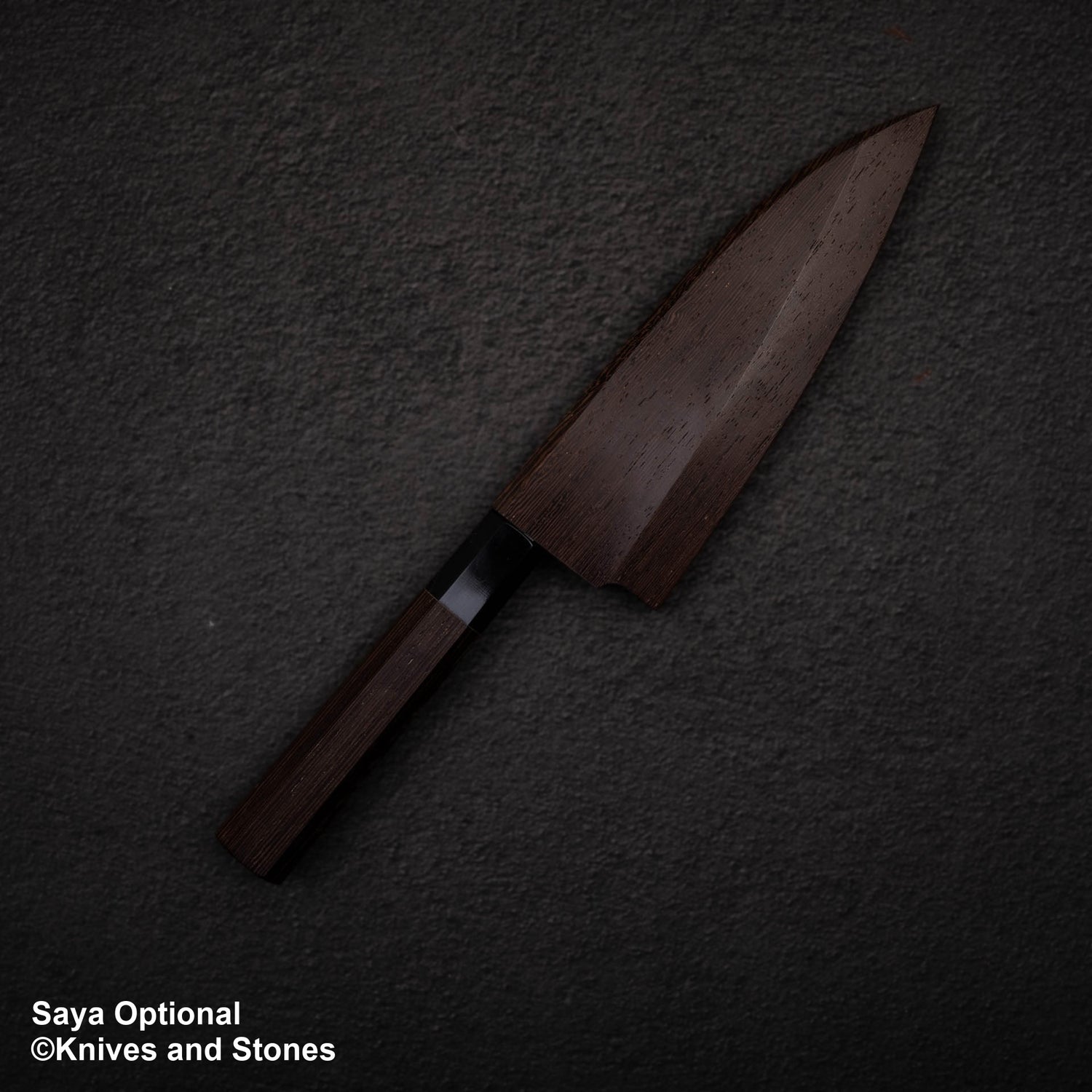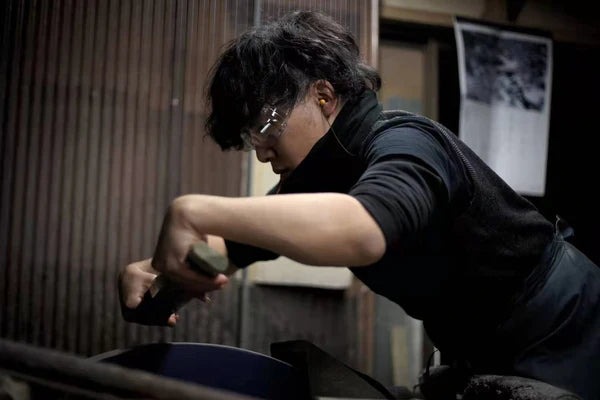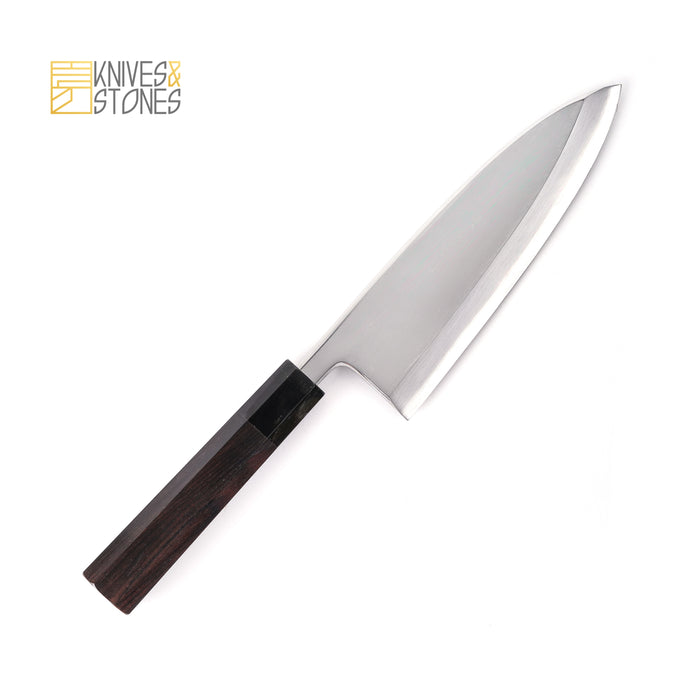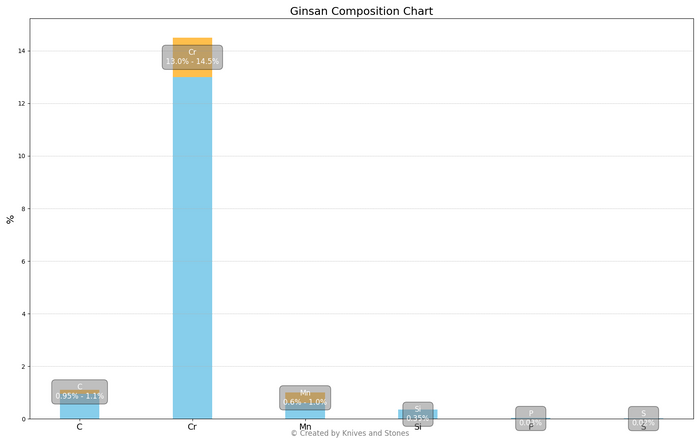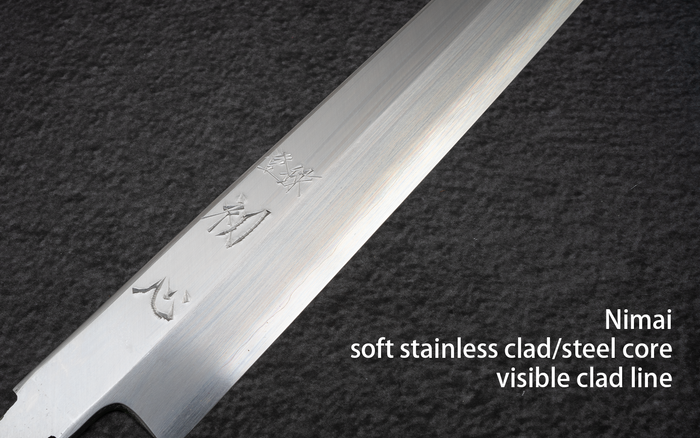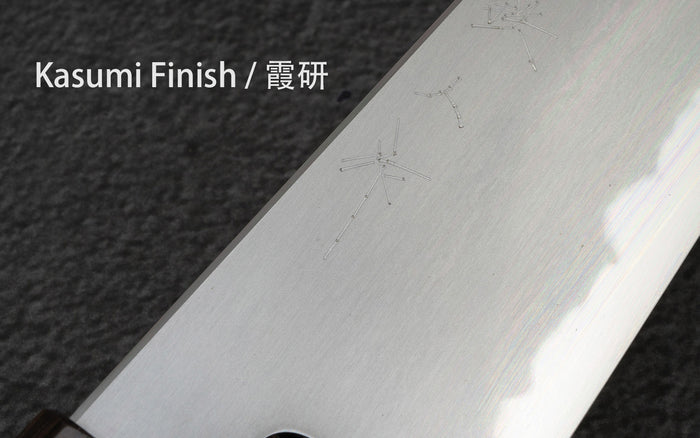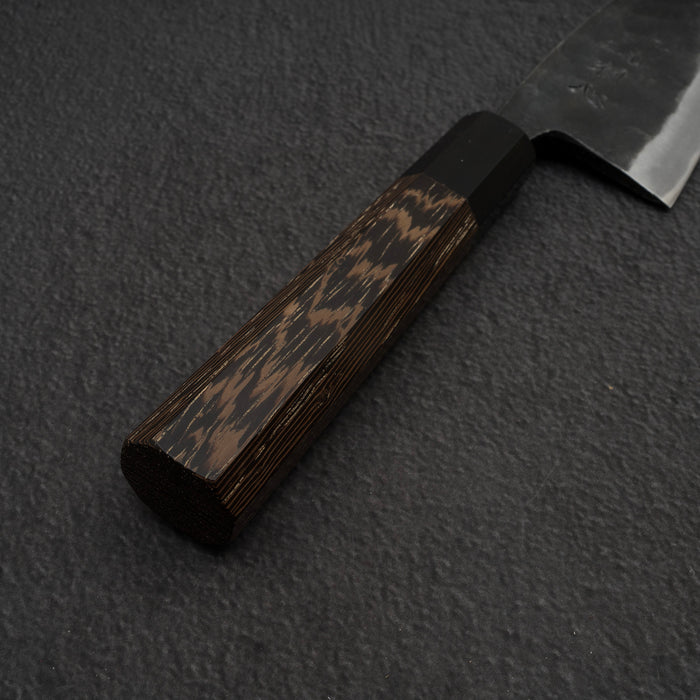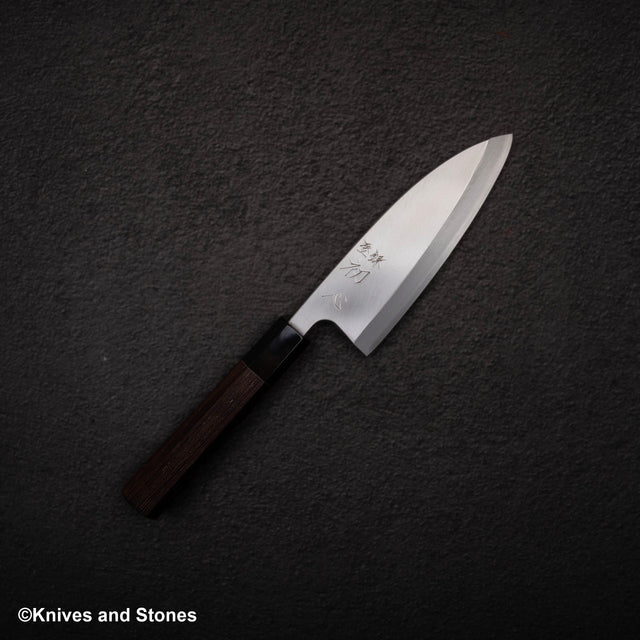K&S - Sydney | 庫存單位:
HST-SHGA-GIN3-DB150
初心×明神白鷺銀山出羽 150mm
正常價格
$6,098.00
單價
/
不可用
初心×明神白鷺銀山出羽 150mm 已缺貨,一旦有貨就會出貨。
無法載入取貨日期
Detailed Specifications
| Line | 初心 白鷺 銀三 霞 |
| Profile | 出刃 |
| Bevel Type | 單斜面 |
| Weight | 267 g | 9.4 oz |
| Edge Length | 150 mm | 5 29/32″ |
| Heel Height | 47 mm | 1 27/32″ |
| Width @ Spine | 7.4 mm | 19/64″ |
| Width @ Mid | 6.2 mm | 1/4″ |
| Width @ 1cm from Tip | 3.3 mm | 1/8″ |
| Steel | 銀三 / 銀紙三號 | 不鏽鋼 |
| Blade Construction | 二枚 - 不鏽鋼夾層 |
| Hardness (HRC) | 60 - 62 |
| Surface Finish | 霞 |
| Handle | 八角紫檀柄 黑色口輪 |
| Region | 土佐 |
| Best for |
|

| Pros | Cons |
|
|
|
Care Instruction
- Don't cut hard things! Japanese knives are brittle so bone hacking is a NO NO!
- Wash with neutral detergent after use, and wipe dry;
- Please don't wash knife with dishwasher, it will damage the wood handle;
- Be careful not to leave the knife close to a heat source for a long time;
- It is a lot more dangerous to cut with a blunt knife than a sharp knife!
- It is best to sharpen a Japanese knife regularly on a waterstone. Error: Steel nature unknown

